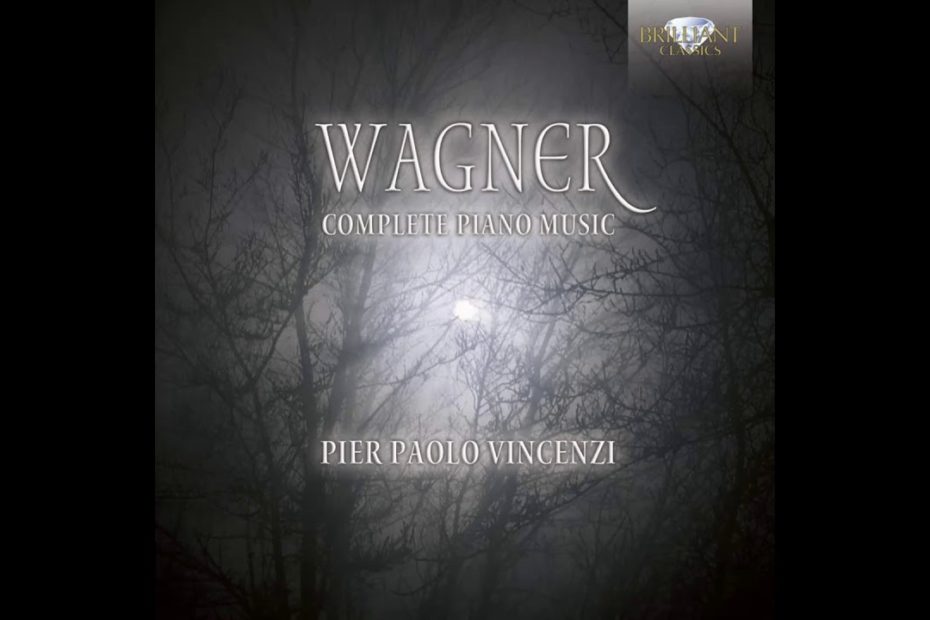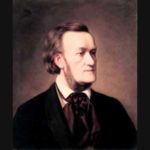Performed by Pier Paolo Vincenzi
I – Ruhig: 0:00
“Don’t look for too many unmentionable motivations in the Album Sonata. I promised it to a young woman who was very kind to me, in return for a beautiful sofa cushion that she gave me as a present.”
So wrote Richard Wagner, nearly twenty-five years after he composed the work in question. The little mention which the composer made to this sonata is exclusively dedicated to downplaying its significance; Wagner knew he would be remembered as a composer of dramatic works, not of “absolute” instrumental ones. Aside from Wagner’s relationship with the work’s dedicatee, does this sonata, all but ignored in Wagner studies, offer any insight into a composer for whom so much insight has already been offered up?
When it comes to the one piano work of substantive length from Wagner’s budding maturity, the Album-Sonate for Mathilde Wesendonck, opinions are too few and divided to make any firm conclusions about the work’s proper place in the composer’s output. Judgment of the piece ranges from the effusive (“Neglected Masterpiece of Richard Wagner”) to piano-biased condescension (“Of course, the musical superiority of Liszt’s Sonata in B minor over Wagner’s little one-movement Album-Sonata in A-flat is so manifest as to make any comparison absurd except for this question of influences… the piano writing in this work is not especially resourceful…”).
Such opinions do more to stifle than spurn on interest in the work, and, like the sonata’s sparse representation on concert programs are indicative of the stasis in piano pedagogy and a general lack of information on the work. As a consequence, the Album-Sonate is seldom-afforded recognition for having occurred at a crucial moment in Wagner’s development. Beyond this slight, analytical studies of the work are lacking; the findings of such studies would undoubtedly reveal the Sonata as worthier of study than is currently accepted.
The most appealing and enticing element of the Sonata is that much evidence points to it as being prototypical; had Wagner had lived much longer after the 1882 Bayreuth Parsifal, his music likely would have borne some resemblance to the Album-Sonate. As Ernest Newman noted, “All evidence goes to show that had his health survived the last inroads made on it by the Parsifal production of 1882 he would have found an outlet for his still considerable musical energy in symphonies and quartets.”
Wagner eschews superfluous or virtuosic piano writing in favor of a texture which at all times supports the melodic-dialectical content of the sonata. As Dowd notes, “The work is completely lacking in the sort of virtuoso flourishes and cadenzas that one expects in most 19th century piano works.” While this statement helps describe Wagner’s approach to the instrument’s role in this work, its hyperbolic dismissal of formulaic cadential figures is somewhat misleading (as will be discussed later).
Criticisms of the piano-writing in the sonata show a clear bias toward the virtuoso-vehicle which by this time had become standard fare; one interpretation of Wagner’s neglect in this respect is derived from statement from the composer himself that he had “never learned to play the piano properly,” augmented by others’ opinion that “Undoubtedly his piano technique lacked polish and he was involved in too many things to spend the time with finger exercises, perfecting a proper technique.” Of course, Wagner’s lack of technical expertise on a given instrument never prevented him from writing it the most diabolical of parts, and piano works from the composer’s youth show how clearly he had absorbed, for example, Beethoven’s approach to the instrument.
The Album-Sonate is ambiguous in its treatment of sonata form. The work has traditionally been seen as a sonata with chiastic elements, in that material from the second thematic group is recapitulated before that of the first. Naturally, the rhetorical effect of such a recapitulation is weakened by the fact that it does not lend itself to a feeling the beginning restated. The defining elements of what qualifies a sonata as such are thus called into question. As has been significantly noted crucial to sonata form is the fact that “The main feature that determines sections is harmonic in nature.” Of course, the authors of such a quote are forced to concede to the multitude of contradictions which arise soon thereafter.
Source: http://www.cameronoconnor.com/etc/wisst-ihr-wie-das-wird1-the-album-sonate-for-mathilde-wesendonck-as-prototype-for-richard-wagners-unrealized-symphonies#




